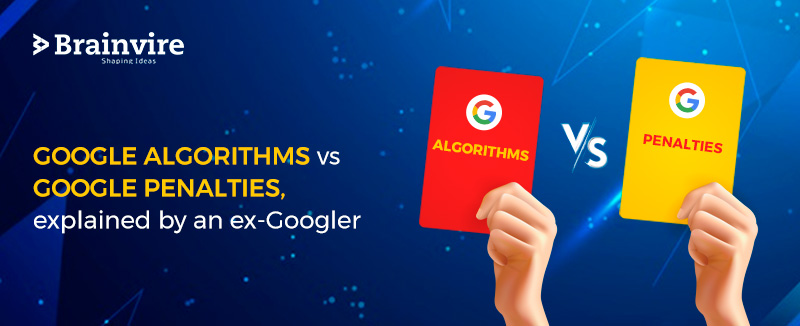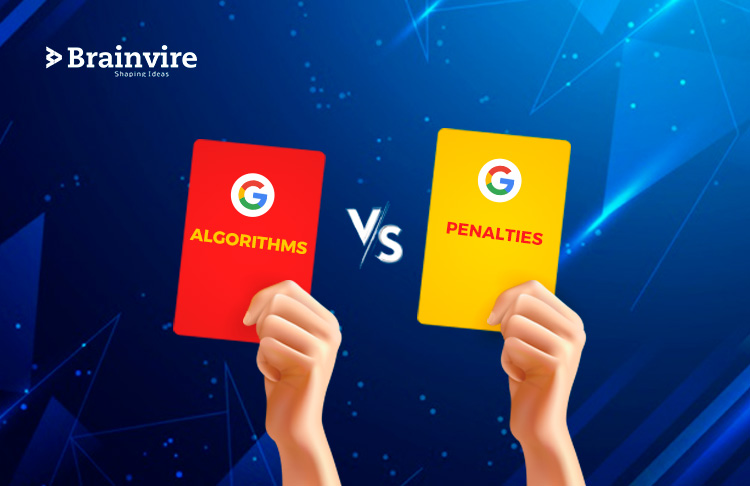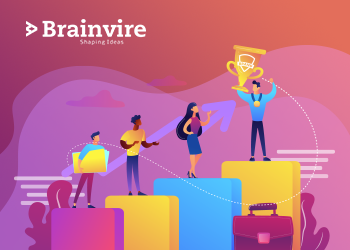
Google has worked its way into being the most sought after input box on the entire web since its inception. This is a direction normally monitored by web professionals with ever-increasing interest, taking it apart in an effort to understand what makes Google tick and how search functions, with all its nuts and bolts.
We have all witnessed the power this small search box generates, especially when it stops working. It alone has the power to bring the world to a halt. But you do not have to go through a Google blackout to witness the influence this tiny little area of input exerts over the network and, eventually, our lives. If you run a website, and you’ve made your way up in search rankings, you likely know what we’re talking about.
The fact that anyone with a web presence typically holds their breath whenever Google tries to push changes to its organic search results does not come as a surprise. Google is primarily a software engineering organization that seeks to solve all its problems on a wide scale. And, let us be frank, solving the problems Google wants to solve solely with human intervention is virtually impossible.
Google Quality Algorithms
Algorithms are like recipes in layman’s terms, a step-by-step series of instructions in a specific order aimed at completing a particular task or solving a problem.
The probability of an algorithm achieving the anticipated outcome is indirectly proportional to the complexity of the assignment it needs to complete.
So, more often than not, rather than a giant single algorithm that tries to cover all possibilities, it is easier to have several (small) algorithms that solve a (big) complex problem, breaking it down into simple sub-tasks.
An algorithm can run tirelessly as long as there is an input, generating what it has been programmed to do. The scale on which it operates relies only on the resources available, such as storage, computing power, memory, etc.
There are algorithms of quality that sometimes do not belong to the infrastructure. There are also infrastructure algorithms that make choices on how to crawl and store content, for example. Most search engines apply quality algorithms only at the moment of serving search results. Meaning, results are only assessed qualitatively, upon serving.
Quality algorithms are seen as ‘filters’ within Google that aim to resurface good content and search for quality signals all over the index of Google. For all websites, these signals are also sourced at the page level. Which can then be mixed, for example, generating scores for directory level, or hostname level.
In certain instances, the impact of algorithms can be viewed as ‘penalties’ for website owners, SEO company, and digital marketing services, especially when a website does not completely meet all the quality requirements, and Google’s algorithms instead decide to reward other websites of higher quality. What popular users see in most of these cases is a decrease in organic efficiency. Not necessarily because the website has been pushed down, but more probably because it has avoided being scored unfairly, which can be either good or poor. To understand how these quality algorithms function, we need to first understand what quality is.
Quality And Your Website
Performance is in the beholder’s eye. This implies, within the world in which we work, consistency is a subjective measurement. This relies on our perception, perceptions and surroundings. For one individual, what is quality is possibly different from what any other individual considers to be quality. We can not bind success to a simple binary method devoid of context. For websites, that’s no different. Quality is, basically, Performance over Expectation. Or, in marketing terms, Value Proposition.
The question is if quality is relative, how does Google dictate what is quality and what is not?
Google does not, in truth, determine what is quality and what is not. All the algorithms and documents used by Google for its Webmaster Guidelines are focused on input and data from actual users. Google analyzes the user behavior as users conduct searches and connect with websites on Google’s index and also performs several recurring checks to ensure that it is consistent with their intentions and needs. This means that they align with what Google’s customers want as Google issues guidelines for websites. Not exactly what is arbitrarily wanted by Google.
This is why Google also claims that algorithms are designed for users to be chased. So, instead of algorithms, if you chase people, you would be on par with where Google is going. With that said, we should look at websites from two separate viewpoints in order to appreciate and optimize the ability for a website to stand out. Being the first perspective of a ‘Service’ and the second perspective of a ‘Product’.
Your Website As A Service
We should examine all the technical aspects involved, from code to infrastructure, when we look at a website from a service perspective. Including how it is built to function; how it is technically stable and consistent; how it manages the process of communicating to other servers and services; all the integrations and front-end rendering.
But, alone, all the technological bells and whistles, where and where value does not exist, do not generate value. They add to value, and at their best make any secret value shine. And that is why, from a product viewpoint, one should work on the technical details, but also consider looking at their website.
Your Website As A Product
From a product perspective, when we look at a website, we should try to consider the experience users have on it. And, finally, what value we have to stand out from the competition.
You should ask the question “If your website disappeared from the web today, what would your users miss, that they would not find in any of the websites of your competitor?” to make this less ethereal and more concrete. We believe that if you want to create a profitable and long-lasting business plan on the web, this is one of the most important questions to address.
Quality Is Not Static
A website must have value, solve a problem or a need in order to be viewed as “of quality”. The explanation for continuous checking, pushing quality improvements, and algorithm upgrades behind Google is simply because the quality is actually a moving target!
If you launch your website and never enhance it, your rivals will inevitably catch up with you over time, either by upgrading the technology of their website or by improving on the experience and value proposition. In time, new experiences often appear to become standard, and most likely struggle to go beyond expectations, just as old technology becomes outdated and deprecated.
Just as SEO is not a one-time operation, any field that sustains a company must develop and innovate over time, once perfected and then permanently optimized, in order to remain competitive.
When all this is left to chance, or not given the attention it needs to ensure that users understand all these characteristics, that is when websites begin to run into problems with organic results.
Manual Actions To Complement Algorithms
To believe that algorithms are perfect and do everything they are meant to do flawlessly would be naive. The great benefit of humans is that we can contend with the unpredictable in the ‘battle’ of human VS machines. Humans have the ability to adapt and consider outlier situations; to understand that, while it may seem bad, or vice versa, anything can be good. And that’s because humans can infer context and intention, whereas machines aren’t that good at it.
When an algorithm catches or fails something it was not meant to do, it is sometimes referred to as ‘false positives’ or ‘false negatives’ in software engineering. We need to classify the performance of false positives or false negatives in order to apply corrections to algorithms-a task that is often best done by humans. So, often, engineers set a level of confidence (thresholds) that the machine should consider before prompting for human intervention.
What Triggers A Manual Action?
There are teams of people within Search Quality who analyze outcomes and look at websites to ensure that the algorithms operate properly. But even when the system makes mistakes, or can not make a decision, they need someone to interfere. Enter the Search Quality Analyst.
A Search Quality Analyst’s role is to understand what they are dealing with, by looking at the data presented, and by making calls for judgment. In order to mitigate human bias, these judgment calls may be easy, but are often monitored and accepted or rejected by other analysts worldwide. This also leads to static actions targeted at (but not just) :
- Creating a set of data that can later be used to train algorithms;
- Address specific and impactful situations, where algorithms failed;
- Signal website owners that specific behaviors fall outside the quality guidelines.
Such static actions are commonly referred to as manual actions.
For a large range of purposes, manual actions may be triggered. But the most popular objective was to combat manipulative intent, which effectively exploited a weakness in quality algorithms for some reason.
The downside of manual actions, as mentioned, is that they are static, and not dynamic like algorithms. So, while algorithms work continuously and react to changes on websites, depending only on recrawl, or algorithm refinement. With Manual Actions the effect will remain for as long as it was set to last (days/months/years), or until a reconsideration request is received and successfully processed.
How Should Website Owners Deal With Manual Actions?
If Google pushes more and more toward algorithmic solutions, using artificial intelligence and machine learning to both boost outcomes and combat spam, manual activities will begin to fade away and will finally disappear entirely in the long run.
The first thing you need to do if your website has been hit with a manual action is to consider what actions triggered it.
That typically means that you should first and foremost have a detailed understanding of the Technical and Quality Guidelines of Google, and test your website against them. It is easy to let yourself get caught up simultaneously juggling all the steps and pieces of knowledge.
You also want to keep the number of times you file a request for reconsideration to a minimum. Do not behave like you are playing trial and mistake. Just collect all of the data, do a clean sweep on your website, and fix it all. Send a request for reconsideration then, and only then.
Recovering From Manual Actions
There is the misconception that after the manual actions have been revoked, you can revert to the same level if you are hit with a manual action and you lose traffic and rankings. This may not have been further from the facts. A manual action, you see, aims at eliminating unequal control.
So, after a cleanup and the manual action was lifted, it would not make sense to return to the same organic results, otherwise it would probably mean you were not benefiting from something that breached the Quality Guidelines.
Any eCommerce website will recover from practically any situation with the help of the right eCommerce SEO services. There are very rare instances where a property is considered unrecoverable. You should, however, have a complete understanding of what you are dealing with. Bear in mind that algorithmic problems and manual behavior will coexist. And, often, before you prioritize and address all the problems in the right order, you can not begin to see something.
So, if you believe your search website has been adversely impacted, make sure you start by looking at the Manual Actions view in the Search Console, and then work your way from there.
Sadly, there is no simple way to clarify what to look for and the signs of each and every algorithmic problem. Algorithmic issues will throw you off unless you have seen and encountered several of them, as they not only stack, but also have distinct timings and thresholds to meet before they go away.
Think about your value proposition, the problem you are solving, or the catering you need. And do not forget to ask your users for feedback. Ask about their feedback on your organization and the experience you have on your website or how they expect you to improve. The results can be incredibly satisfying when you ask the right questions.
Final Takeaways
Rethink the value proposition and competitive advantage: We are no longer in the boom of .com. Getting a website is not a strategic advantage in itself.
Treat your website as a product and consistently innovate: You will be run over if you do not press forward. Effective websites strengthen and iterate continuously.
Study the needs of your users through User Experience: Your users should be the target first, Google second. You are definitely losing out if you do it any other way. Talk to your users and think about their opinions.
Technical SEO is significant, but nothing can be solved alone: If your product/content has no appeal or value, it does not matter how technical and optimized it is.
Related Articles
-
Top WordPress Theme Platforms for Stunning Website Design
WordPress has become the go-to platform for creating websites due to its flexibility, ease of use, and extensive range of themes. Whether you’re building a personal blog, a business site,
-
10 Must Have Digital Marketing Tools Used by Experts
Digital marketing has become an exciting tool for small and medium-sized businesses and solopreneurs. Many valuable and affordable marketing tools can help your company reach a wider audience and market
-
Brand Communication uplifts business potentials
A company starts to communicate about its existence since its inception. The firm puts conscious efforts to create an identity, and improve brand communication as the brand evolves. A good



